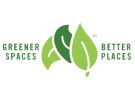Greener Spaces Better Places is the new name for 202020 Vision. Greener Spaces Better Places’ mission is to ensure that as urban places grow, so do green spaces in Australia’s towns, suburbs and cities, and in doing so, make Australia’s urban areas the greenest in the world.
The program will continue to share knowledge and best practice advice on urban greening while providing tools for communities to plan and implement urban green spaces into their policies and projects.
Yet as 2020 approaches, Australia's urban areas are facing big challenges and opportunities. Hort Innovation chief executive, Matt Brand said the program’s continued priority is to build more and better urban green spaces across the country.
“The program will work to ensure that as cities grow, so do green spaces; and that they are grown with quality, best practice and address key challenges cities face. To promote health and wellbeing in individuals, build resilient communities and support a sustainable society, the program will work holistically to champion the benefits of green space in relation to urban liveability - not just for the fortunate few, but for everyone,” Mr Brand said.
“We will also support our network transition to water sensitive cities. This will require broad community acceptance of changes in policy, practice, and technology. Additionally, we will support the nursery industry in understanding species survival rates, because we know many aspects related to climate change are also likely to affect urban forestry and productivity.”
Professor Tonia Gray from Western Sydney University and Greener Spaces Better Places advocate believes city planning must include a greater emphasis and inclusion of nature. “We are hardwired to be connected to nature - this isn’t anything new, it’s just newly important, in our increasingly urban lives,” she said.
“Greener Spaces Better Places, alongside the network, has an integral role to play in upscaling the importance of nature and reinforcing the message that green is good. We know when done right, urban greening leads to vibrant, creative, beautiful and desirable -places to live.”
Looking back, what’s been achieved?
Since launch in 2013 - with an aspirational goal to increase and improve Australia’s urban green space by 20% by 2020. The goal was developed as an aspirational vision and has made significant inroads since inception in terms of research, advocacy policy and plants in the ground. Specifically the Vision:
- Created Australia’s first benchmark measurement of urban green space by measuring green space in all 139 of Australian urban and peri-urban LGAs (in partnership with UTS)
- Trained over 600 people from 140 councils how to put an urban forestry growth strategy in place
- Brought together 7000+ individuals and organisations to form the country’s biggest network of green space advocates
For more information: Greener Spaces Better Places
Greener Spaces Better Places
[email protected]
www.greenerspacesbetterplaces.com.au
